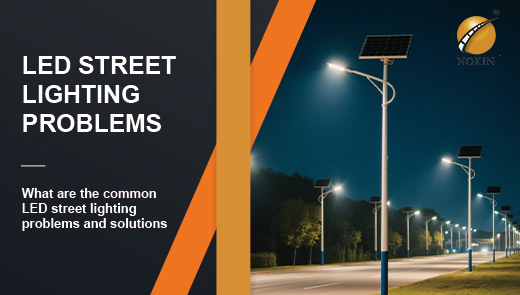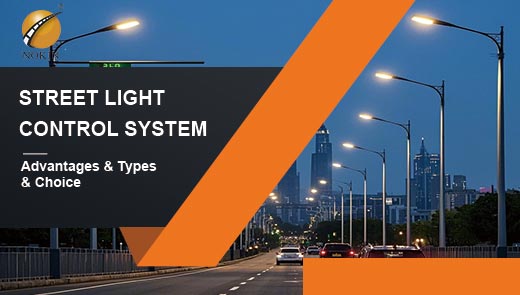LED Street Light Design Technology for Road Lighting
Road lighting plays an indispensable role in the construction and operation of urban and rural environments. It is not only related to traffic safety and social security, but also has a profound impact on city image, night-time economic development and environmental protection. LED street light design technology with its unique advantages, is becoming the mainstream choice in the field of road lighting.
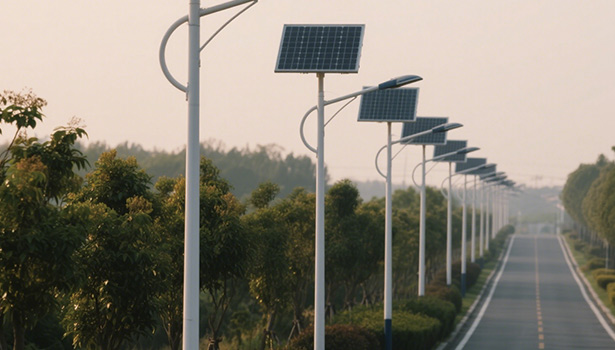
Importance of LED road and street lighting
Road lighting is an important line of defense to ensure traffic safety. At night, bright street lights can significantly improve road visibility and reduce the risk of traffic accidents caused by poor visibility. Studies have shown that good lighting conditions can reduce the incidence of traffic accidents at night by 30% - 40%. At the same time, adequate lighting can also effectively deter criminal activity, so that residents and tourists feel safer when traveling at night, especially in densely populated urban areas with frequent commercial activities, bright streets are an important guarantee of safety.
Modern LED street lights not only assume the function of lighting, but also become an important element in shaping the image of the city. Aesthetically pleasing, softly lit LED street lights can create a comfortable and pleasant urban atmosphere and enhance the overall attractiveness of the city. In addition, a bright and safe night environment can promote night commercial activities, extend business hours, attract more consumers, and promote the prosperous development of the night economy. At the same time, the energy-saving and environmentally friendly characteristics of LED street lights also help cities to realize the goal of sustainable development and reduce energy consumption and carbon emissions.
Evolution of LED street light design technology
Early development
The development of LED began in the 1960s and 1970s, when it was mainly used as a low-power indicator light with a very limited range of applications. In the 1980s, as semiconductor technology continued to advance, the brightness of LED was significantly improved, and the possibility of a wider range of applications gradually became available. In the 90s, the successful development of high-brightness LED began to be used in outdoor lighting, laying the foundation for the development of LED street lights.
The first generation of LED street lights
Early LED street lights were designed to save energy, and although they had some advantages over traditional street lights in terms of energy utilization efficiency, they had many problems. Its brightness is limited, can not meet some of the high light requirements of the road scene; light distribution is not uniform, resulting in poor lighting effect in some areas; at the same time, the higher upfront cost also limits its large-scale promotion and application, making the initial market acceptance is low.
Technical breakthroughs
In recent years, LED street light design technology has made a series of important breakthroughs. In terms of chip efficiency, through technological improvements, the luminous efficiency of LED (measured in lumens / watt) has been greatly improved, so that the LED street lights in the same energy consumption can provide brighter lighting, effectively reducing the cost of use. Advances in thermal management technology are also critical. Advanced thermal design, such as the application of highly efficient heat sinks and heat dissipation materials, has solved the problem of heat generation during the operation of LED, significantly extending their service life. In addition, the improvement of color rendering index (CRI) enables LED street lights to more realistically restore the color of objects, enhancing the visual effect of road lighting.
Integration with smart systems
With the development of Internet of Things (IoT) technology, the integration of LED street lights with smart systems has become a new trend. Intelligent LED street lights are equipped with motion sensing and dimming functions, which can automatically adjust the brightness according to the actual demand and realize energy saving. Through the combination with IOT, it can also realize remote monitoring, fault detection and energy usage tracking, which is convenient for city managers to carry out efficient maintenance and management. Many cities have incorporated LED street lights into the framework of smart city construction, enhancing the overall management level of the city through the collaborative work of intelligent lighting systems and other urban management systems.
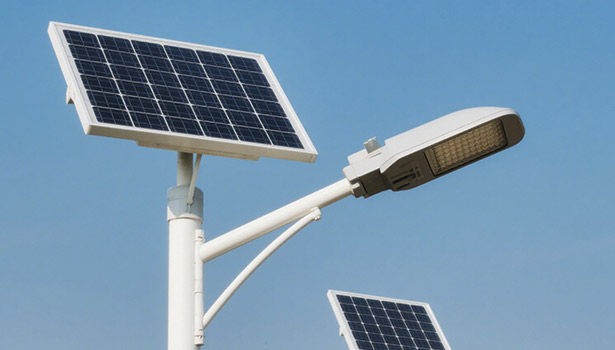
Advantages of LED street light design technology
Good stability of light source
The light source of LED street light has excellent stability, stable and reliable light conduction performance, there will be no light interruption, flickering and other problems, to avoid misleading road users. The surface of the lamp body is made of high-quality tempered glass, which has good explosion-proof, shock-proof and waterproof performance, and can work normally in various harsh environments to ensure long-term stable lighting, which is very suitable for the complex use of urban roads.
Significant cost advantages
|
Item |
LED Street Light |
Traditional High-Pressure Sodium Lamp |
|
Initial Installation Cost |
Higher |
Lower |
|
Maintenance Cost |
Low |
High |
|
Lifespan |
Around 100,000 hours |
10,000 – 20,000 hours |
|
Annual Energy Savings |
About 30% (in some areas) |
– |
Although the initial installation and laying costs of LED street lights are relatively high, the advantages are obvious in the long run. Due to the use of high-quality durable materials, LED street lights are not easily contaminated with debris, easy to clean and maintain, effectively reducing the cost of cleaning. Moreover, its low energy consumption and long service life make the subsequent maintenance cost significantly reduced, and the overall cost of ownership is lower than traditional street lights.
Energy saving and environmental protection
LED street light adopts green lighting technology with intelligent energy saving function. At night, when the traffic and pedestrian flow is low, the street light can automatically reduce the brightness and shorten the lighting time, and when needed, it can quickly return to the required brightness and provide a stable light source. Take 60W LED street light and 250W high pressure sodium lamp as an example, the lighting effect of both is similar, but the power of LED street light is greatly reduced, which has significant energy saving effect. In addition, under the same power, the area of copper wire used in LED street lights is only one-third of that of ordinary street lights, which further reduces energy consumption and waste of resources.
Other characteristics advantages
LED street light adopts directional light-emitting method, the light is concentrated, no scattering and diffusion phenomenon, high utilization rate of light efficiency. Each LED lamp bead is independent of each other, and can be flexibly adjusted according to environmental changes, so as to realize the best lighting effect at the lowest cost. Its long service life reduces the trouble and cost of frequent replacement of lamps and lanterns. At the same time, the LED street light is easy to install without complicated cable burial and rectifier settings, and the power supply circuit adopts high-quality independent components with strong over-current protection capability and high reliability. In addition, the energy-saving control device is equipped so that it can automatically adjust the power according to the lighting demand at different times of the day, maximizing energy savings and reducing noise while meeting the lighting requirements.
Factors to consider in LED street light design
Road classification
The lighting requirements for different types of roads vary greatly. For example, urban trunk roads and highways with large traffic volume and high speed require high lighting brightness and uniformity to ensure that drivers can find road conditions and obstacles in a timely manner; while community roads and rural roads with relatively low traffic volume and speed, the lighting brightness can be appropriately lowered, but the need to focus on the comfort and safety of the lighting. Therefore, in the design of LED street lights, according to the specific classification of the road, reasonable determination of the power of the street lamp, optical design and installation height and other parameters.
Lumen output
Lumen output is an important index to measure the brightness of LED street light. When choosing the lumen output of LED street light, it is necessary to consider the road width, speed limit, ambient light and other factors. Generally speaking, the wider the road and the faster the speed, the higher the required lumen output; when the surrounding ambient light is weak, a higher lumen output is also required to ensure sufficient lighting effect. Through scientific calculations and practical tests to determine the appropriate lumen output, both to meet the lighting needs, but also to avoid energy waste.
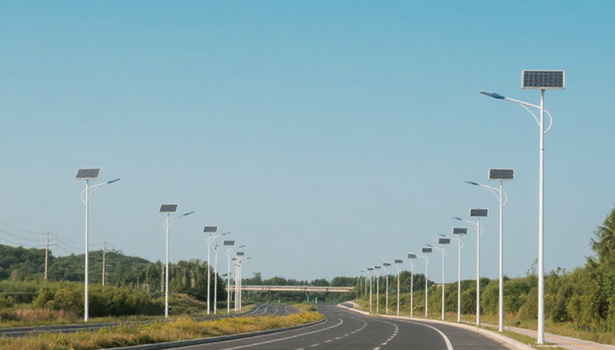
Optics and beam angle
The optical design and beam angle of LED street lights directly affect the distribution and coverage of light on the road. For straight roads, symmetrical optical design and large beam angle are usually used to achieve uniform lighting effect; while in curves, intersections and other special road sections, asymmetrical optical design and specific beam angle are needed to focus the light on the area that needs to be illuminated to improve the relevance and effectiveness of lighting.
Color temperature
Color temperature has an important impact on the visual experience and safety of road users. In residential areas and other areas with high ambience requirements, LED street lights with warm color (2700K - 4000K) are usually chosen to create a warm and comfortable environment; while in areas with high visual clarity requirements such as highways and urban arterial roads, LED street lights with cool color (5000K - 6500K) are more suitable to improve the visual recognition of drivers and ensure driving safety.
Thermal management
Good thermal management is the key to ensure the performance and life of LED street light. LED will generate heat during the working process, if it can't dissipate the heat effectively in time, it will lead to higher temperature of LED chip, which will reduce the luminous efficiency and shorten the service life. Therefore, in the design of LED street light, it is necessary to adopt efficient heat dissipation program, such as designing reasonable heat sink structure, using materials with good thermal conductivity, etc., to ensure that the LED chip works within the appropriate temperature range.
Intelligent control
The introduction of intelligent control function provides a new way for LED street light management and energy saving. By integrating intelligent control systems such as dimming control, motion sensors and remote monitoring, the brightness of the street light can be automatically adjusted according to the actual traffic flow, ambient light and other factors to realize on-demand lighting. Meanwhile, the remote monitoring function facilitates the management personnel to grasp the running status of the street light in a timely manner, carry out troubleshooting and maintenance, improve management efficiency and reduce maintenance costs.
Innovations in LED street light design
Integrated solar panel
Integrating solar panel with LED street light is an important innovation direction in LED street light design in recent years. By installing solar panels on the top of the streetlight, solar energy is absorbed during the day and converted into electricity for storage, which is used to drive the streetlight at night. This design does not need to rely on external grid power supply, especially for remote areas and poor grid coverage, not only reduces energy costs, but also reduces the dependence on traditional energy sources, with significant environmental benefits.
Wireless communication
LED street light with wireless communication function can realize remote monitoring, control and data collection. Managers can view the operation status of each streetlight in real time, including brightness, energy consumption, fault information, etc. through mobile APP or computer-based management system. Once the street light is found to be faulty, the system can automatically alarm and locate the fault location, so as to facilitate the maintenance personnel to deal with it in time, which greatly improves the maintenance efficiency of the street light. At the same time, through the analysis of street light operation data, it can also optimize the lighting scheme to achieve more accurate energy management.
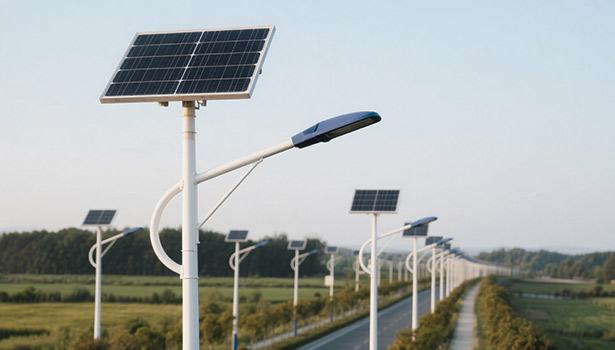
Intelligent lighting control
Intelligent lighting control system can automatically adjust the brightness of LED street lights according to real-time road conditions, traffic flow and ambient light. For example, when there is less traffic late at night, the brightness of the streetlight is automatically reduced; when a vehicle or pedestrian passes by, the brightness of the streetlight is quickly increased, which not only meets the lighting demand, but also saves energy to the greatest extent possible. In addition, the adaptive lighting function can also automatically adjust the lighting parameters according to weather changes, seasonal changes and other factors, providing a more comfortable and safer lighting environment.
Advanced optical design
Advanced optical design, such as the application of asymmetric optics and multi-layer optical structure, enables the LED street light to realize more precise light distribution. Asymmetric optical design focuses the light on the middle of the road and pedestrian areas, reducing the scattering of light to ineffective areas around the road, improving light efficiency and reducing light pollution at the same time. The multi-layer optical structure further optimizes the refraction and reflection of light, resulting in a more uniform and softer lighting effect, enhancing the visual comfort of road users.
Modularity and upgradability
Modular design is another innovative highlight of the LED street light. By designing the various components of the street light, such as LED light source module, drive power module, heat dissipation module, etc. as independent standardized modules, it is easy to install, maintain and replace. When a component fails, only the corresponding module needs to be replaced without disassembling and replacing the whole street light, which greatly shortens the repair time and reduces the maintenance cost. At the same time, the modular design also makes the street light scalable, with the development of technology, it is convenient to upgrade and improve the function and performance of the street light.
Integration with smart city
Integrates LED street lights into the smart city construction system, realizing the synergy between the lighting system and other urban intelligent systems. Through integration with traffic management systems, street lights can automatically adjust brightness according to traffic flow, providing assistance for traffic diversion; linked with public safety systems, cameras and sensors on street lights can monitor the surrounding environment in real time, and timely alarms can be issued upon discovery of abnormalities; combined with environmental monitoring systems, environmental indicators such as air quality and noise can be monitored in real time, providing data support for urban environmental management. This integrated design promotes the intelligent and refined development of urban management.
LED street light design technology has become the development trend in the field of road lighting by virtue of its significant advantages in safety, energy saving and intelligence. From the early technical exploration to today's continuous innovation, LED street light design technology plays an increasingly important role in improving the quality of road lighting, guaranteeing traffic safety and promoting sustainable urban development. With the continuous progress and innovation of technology, the future LED street light design technology will make greater breakthroughs in intelligent control, energy utilization, integration with urban systems, etc., to create a safer, more comfortable, environmentally friendly, intelligent urban road lighting environment to provide strong support.

